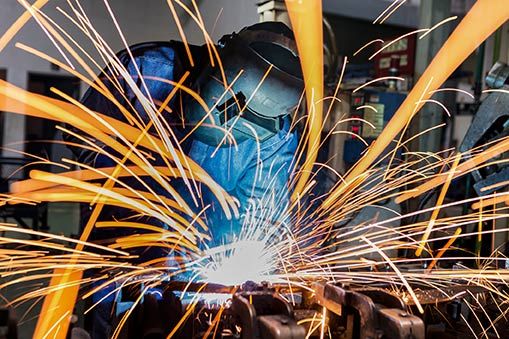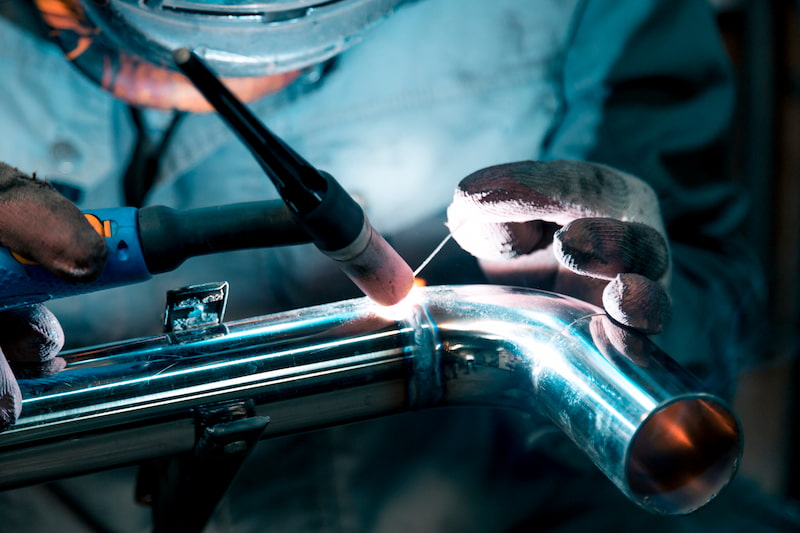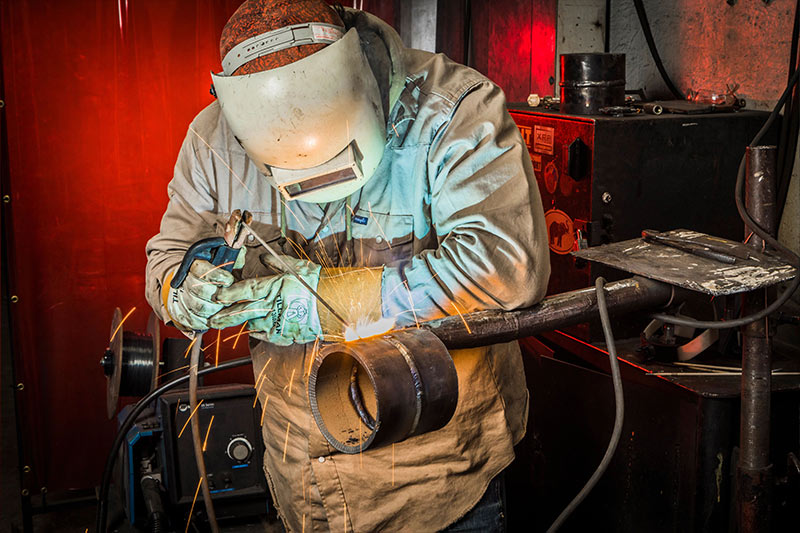Usual Welding Fixing Issues and How to Address Them Efficiently
Welding repairs usually run into a series of issues that can jeopardize the honesty of the end product. Usual troubles include inadequate penetration, porosity, and misalignment, amongst others. Each defect presents special difficulties that need particular strategies for resolution. Comprehending these concerns is essential for welders aiming to enhance their skills and outcomes. This discussion will certainly check out these typical welding fixing issues and efficient approaches to resolve them.
Poor Penetration
Insufficient infiltration occurs when the weld metal falls short to completely fuse with the base product, leading to weak joints and possible structural failings. This problem often stems from not enough heat input, incorrect electrode angle, or incorrect welding speed. Welders might come across inadequate penetration because of a miscalculation of the essential specifications for a certain product thickness or kind. Furthermore, contamination on the base material's surface can prevent reliable bonding, worsening the trouble. To address insufficient infiltration, welders ought to assure suitable setups on their devices and maintain a tidy work surface area. Regular assessment of welds is recommended to determine any kind of deficiencies early, permitting prompt corrections and the avoidance of compromised structural honesty in bonded assemblies.
Porosity
Porosity is an usual defect in bonded joints that shows up as tiny gas bubbles entraped within the weld steel. This defect can endanger the stability of the weld, bring about decreased toughness and potential failing under tension. Belgrade. Porosity generally develops from contamination, dampness, or incorrect welding strategies, which allow gases to leave into the liquified weld pool. To address porosity, welders ought to ensure proper surface preparation, preserve a clean workplace, and make use of appropriate welding criteria. In addition, picking the best filler material and protecting gas can alleviate gas entrapment. Normal inspection and screening of welds can aid determine porosity early, ensuring prompt rehabilitative actions are taken, thereby preserving the top quality and dependability of the welded structure
Misalignment
Misalignment in welding can arise from numerous factors, consisting of inappropriate setup and thermal development. Comprehending the source is essential for reliable resolution. Several adjustment techniques are available to realign parts and ensure structural integrity.
Root causes of Imbalance
Welding misalignment typically comes from a selection of underlying concerns that can compromise architectural integrity. One main cause is incorrect fit-up of components prior to welding, which can bring about spaces and irregular surfaces. Variants in thermal growth during the welding process can also cause distortion, specifically if the materials being signed up with have various coefficients of development. Additionally, insufficient clamping and fixturing might fail to hold parts firmly in place, leading to activity throughout welding. Improperly conserved equipment, consisting of welding equipments and devices, may introduce variances in the weld bead, more adding to imbalance. Driver error, stemming from not enough training or experience, can also play a considerable function in producing misaligned welds.

Modification Methods Available
Resolving imbalance properly calls for a combination of rehabilitative strategies tailored to the specific problems handy. One typical approach is making use of jigs or fixtures to hold components in the correct setting during welding, guaranteeing constant alignment. Additionally, pre-heating the materials can aid reduce distortion and enhance fit-up. For substantial imbalance, mechanical realignment methods, such as making use of hydraulic jacks or clamps, can be utilized to remedy the placement prior to welding. Post-weld warm treatment might additionally be needed to ease anxieties brought on by imbalance. Careful examination and change throughout the configuration phase can protect against misalignment issues from becoming substantial issues, advertising a smoother welding procedure and enhancing overall architectural integrity.
Distortion
Distortion is a common challenge in welding that can occur from various elements, including irregular home heating and cooling. Comprehending the sources of distortion is vital for executing efficient prevention methods. Addressing this concern not only enhances architectural honesty however likewise boosts the general top quality of the weld.
Reasons of Distortion
When based on the extreme warm of welding, products typically undergo modifications that can lead to distortion. This phenomenon mainly develops from thermal development and tightening during the welding procedure. As the weld area warms up, the material increases; upon cooling, it acquires, which can create internal anxieties. Furthermore, unequal heating throughout a workpiece can exacerbate these anxieties, causing warping or bending. The kind of material also plays a substantial role; steels with differing thermal conductivity and coefficients of expansion might respond in different ways, causing unforeseeable distortions. Additionally, inadequate joint design and insufficient fixturing can add to misalignment during welding, raising the chance of distortion. Comprehending these reasons is vital for effective welding repair service and avoidance techniques.
Avoidance Techniques
Reliable avoidance strategies for distortion during welding concentrate on regulating heat input and making certain appropriate joint style. Preserving a regular warm input assists to minimize thermal expansion and contraction, which can cause distortion. Making use of strategies such as preheating the work surface can likewise lower the temperature slope, advertising consistent heating. Additionally, choosing appropriate joint styles, such as T-joints or lap joints, can boost stability and decrease anxiety concentrations. Implementing proper fixturing to safeguard the workpieces in location even more help in keeping alignment throughout the welding process. Staggered welding sequences can disperse warmth more evenly, protecting against local distortion. By using these approaches, welders can greatly reduce the likelihood of distortion and boost the total high quality of their welds.
Splitting
Splitting is a common issue experienced in welding repairs, commonly resulting from different factors such as incorrect cooling rates, material choice, or poor joint prep work. The event of fractures can significantly jeopardize the stability of the weld, causing prospective failings throughout operation. To address this concern, welders must initially examine the source, making certain that materials work and suitably picked for the particular application. Additionally, controlling the cooling rate during the welding procedure is vital; rapid air conditioning can induce tension and bring about cracking. Proper joint layout and preparation also add to decreasing the danger. Executing these methods can enhance weld quality and toughness, ultimately decreasing the likelihood of cracking in completed weldments.

Incomplete Blend
A significant issue in welding repair services is incomplete fusion, which happens when the weld steel does not sufficiently bond with the base product or previous weld passes - Fabrication. This problem can bring about weak points in the joint, potentially compromising the integrity of the welded structure. Elements contributing to insufficient combination include insufficient heat look at this website input, improper welding strategy, and contamination of the surfaces being signed up with. To address this issue efficiently, welders must ensure appropriate pre-weld cleaning and surface area prep work, in addition to readjust their welding criteria to accomplish ample penetration and blend. Normal assessment throughout the welding process can additionally help determine insufficient fusion early, permitting timely rehabilitative steps to enhance the general quality of the weld
Overheating
While welding fixings can enhance structural honesty, overheating presents a considerable see page obstacle that can lead to material degradation. Too much heat throughout welding can alter the mechanical residential properties of metals, resulting in decreased strength, enhanced brittleness, and bending. This sensation is especially critical in high-stress applications where structural reliability is paramount. Determining overheating can involve visual evaluations for discoloration or distortion, along with keeping track of temperature level during the welding process. To minimize the threats connected with getting too hot, welders should employ appropriate strategies, such as managing warmth input, readjusting travel speed, and making use of appropriate filler materials. In addition, implementing pre- and post-weld warm therapies can help restore material residential or commercial properties and enhance the overall quality of the repair, making certain long-lasting efficiency and safety and security.
Often Asked Inquiries
What Are the Common Indications of a Welding Defect?

How Can I Test My Welds for Top quality?
To evaluate welds for quality, one can use visual examinations, ultrasonic testing, and radiographic techniques. Each strategy guarantees structural honesty, determines problems, and verifies adherence to specified criteria, inevitably improving the reliability of the welded joints.
What Safety Precautions Should I Take While Welding?
When welding, one ought to focus on safety and security by wearing suitable personal protective devices, making sure correct ventilation, safeguarding combustible materials away, maintaining a tidy work space, and knowing environments to stop accidents and injuries.
Can I Repair a Weld Without Redesigning the Entire Joint?
Fixing a weld without remodeling the entire joint is feasible, depending upon the damage (Montana Mobile Welding and Repair). Techniques such as grinding, adding filler material, or utilizing a welding process can effectively address particular flaws while maintaining the surrounding visit their website framework
What Equipment Are Important for Efficient Welding Fixes?
Essential devices for effective welding fixings include a welding machine, cord brush, mill, safety gear, clamps, and filler products. Each tool plays an important duty in making sure quality and security throughout the repair service procedure. Porosity commonly develops from contamination, moisture, or inappropriate welding methods, which allow gases to escape right into the molten weld swimming pool. Badly kept devices, consisting of welding makers and devices, may introduce inconsistencies in the weld grain, further adding to imbalance. When subjected to the intense warm of welding, products commonly go through modifications that can lead to distortion. Fracturing is a common problem experienced in welding repair work, often resulting from various factors such as improper air conditioning rates, material choice, or insufficient joint prep work. A significant problem in welding fixings is insufficient blend, which occurs when the weld metal does not effectively bond with the base material or previous weld passes.